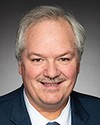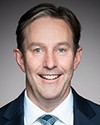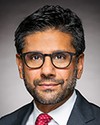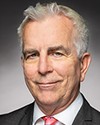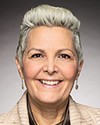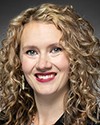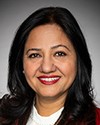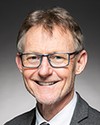Thanks very much.
I respect Dr. Hanley's comments on this. I think the difficulty is that we've heard overwhelming evidence at this committee and it's piling up by the minute. We have one of the world's foremost experts here, Dr. Yaffe, who has worked on this around the world for 44 years, as he said himself. We know very clearly that the evidence suggests women should be offered screening for breast cancer between the ages of 40 and 79. That means women would have access without receiving mixed messages. It would be an incredibly strong message from this committee to tell the task force that what they have concluded is incorrect.
I realize that many of us sitting around this table may not be scientific experts, and I realize we're not on the task force. The difficulty, as we have heard very clearly, is that continuing to allow the task force to operate in a manner that is disrespectful of science, is anti-screening and anti-prevention—those words are not too strong; we've heard them repeatedly here—is reckless, especially when we have heard that 1,000 women will die based on the reckless nature of Canada's preventive health care task force.
Perhaps many would argue that this is not in the purview of this committee or the federal government. However, the important fact we need to remember is that this committee can have an incredibly loud voice out there on behalf of Canadian women, a number of whom will die when they shouldn't because of the inaction, inability or perhaps ignorance of a task force that does not want to consider science, which is dynamic and changing. I was a family doctor for 26 years. Realizing that science changes is an important aspect of providing excellent, quality health care.
The other important thing to note is that for the Canadian Task Force on Preventive Health Care to have a bias, as Dr. Yaffe and other witnesses have suggested, against screening and prevention is a non-starter. It's illogical to think that a task force based on preventive health care would have a bias against screening. That is nonsensical.
To not allow women to make well-informed decisions based on a discussion they could have with their health care provider is incredibly misogynistic, in my opinion. As I said, I'm a male former health care provider. To not allow women to have an opportunity to have a discussion is problematic for me. To not allow that to exist is going to result in the deaths of more women, and that is absolutely intolerable.
I will state for folks that this is an incredibly personal thing for me. My wife had breast cancer diagnosed at age 48. Thankfully, she made it past her five-year mark and has made a fantastic recovery.
That being said, it is not just science. It's personal. We look at the potential years of life lost for young women who are not able to access screening. As our colleague from the NDP mentioned, women from marginalized, racialized and often remote and rural communities do not have access.
Do you know what really struck me with our NDP colleague's testimony? It was that she was a 48-year-old white woman who had to fight for herself. I can only imagine, from my perspective, what it would be like to be from a racialized community and attempting to advocate for yourself when the Canadian Task Force on Preventive Health Care has said that you are not able, at age 40 plus, to access screening for breast cancer. I can't imagine how much of a daunting task that would be. In fact, I would suggest that it becomes an impossibility to advocate for yourself against a system in which the cards and the deck are already stacked against you.
Perhaps, as my colleague Dr. Hanley suggests, this isn't quite the way it should be, but if we do not come forward with an incredibly loud voice, as I suggested to the last panel, the likelihood of the task force succumbing to anybody else.... My goodness, we have someone like Dr. Yaffe suggesting that this needs to be changed, and the likelihood of the task force changing course and agreeing with him is probably slim to none. If we do not make incredible amounts of noise about this on behalf of Canadian women, I think we are doing it a disservice.
The other thing to consider, when you look at the amount of press playing into this, is that it's incredibly important for the media to understand the decision being made and how important it is that the task force is going against new evidence. Our neighbours to the south in the U.S. preventive services task force have agreed that the evidence is there for screenings, perhaps not, as Dr. Yaffe suggested, to age 79, but certainly between ages 40 and 74, with the option for women over 74 to have screenings, as Dr. Kulkarni said, based on their overall level of health. That makes perfect sense.
For us not to make a loud noise about this, when we have had an overwhelming amount of evidence to the contrary, does Canadian women a disservice. I don't want to be a part of doing Canadian women a disservice, and I would urge my colleagues, in spite of their belief that this is not the appropriate table to make this call, to reverse their decision and support my colleague's motion unanimously. I think science is against you, I think public opinion is against you, and I think history will stand against you and say that the decisions you have chosen to make here are inappropriate.
I want to be clear. I like my colleague Dr. Hanley. I respect his decision. That being said, if we do not make a loud noise about this, the difficulty that will persist is that we will continue to send mixed messages to provinces and to Canadian women. Canadian women are going to die because of that and that's not right. It may not be exactly in our purview, but it is certainly within our purview to say that we categorically do not agree with the decisions that have been made, that the decision should immediately be reversed and that breast cancer screening should be extended to women in their forties.
I've asked other panellists here today how best they think we could make a loud noise with respect to that because I believe that is exactly what needs to happen. This needs to be a loud noise. It needs to be definitive. We need to call out a task force that is not respecting science, that refuses to respect science. We know that other task forces in the United States and Europe have chosen not to require randomized controlled trials. We believe this part of the science has been settled. We need to move forward and understand that we have new methods of diagnosis and new methods of treatment for breast cancer and that those new and best methods need to be respectful of Canadian women.
I don't think I can state it any stronger than that. I urge my colleagues to accept unanimously this motion put forward by my colleague from Fort McMurray—Cold Lake on behalf of Canadian women, who are dying senselessly because of the inaction and ineptitude of the Canadian Task Force on Preventive Health Care.
Thank you, Chair.


